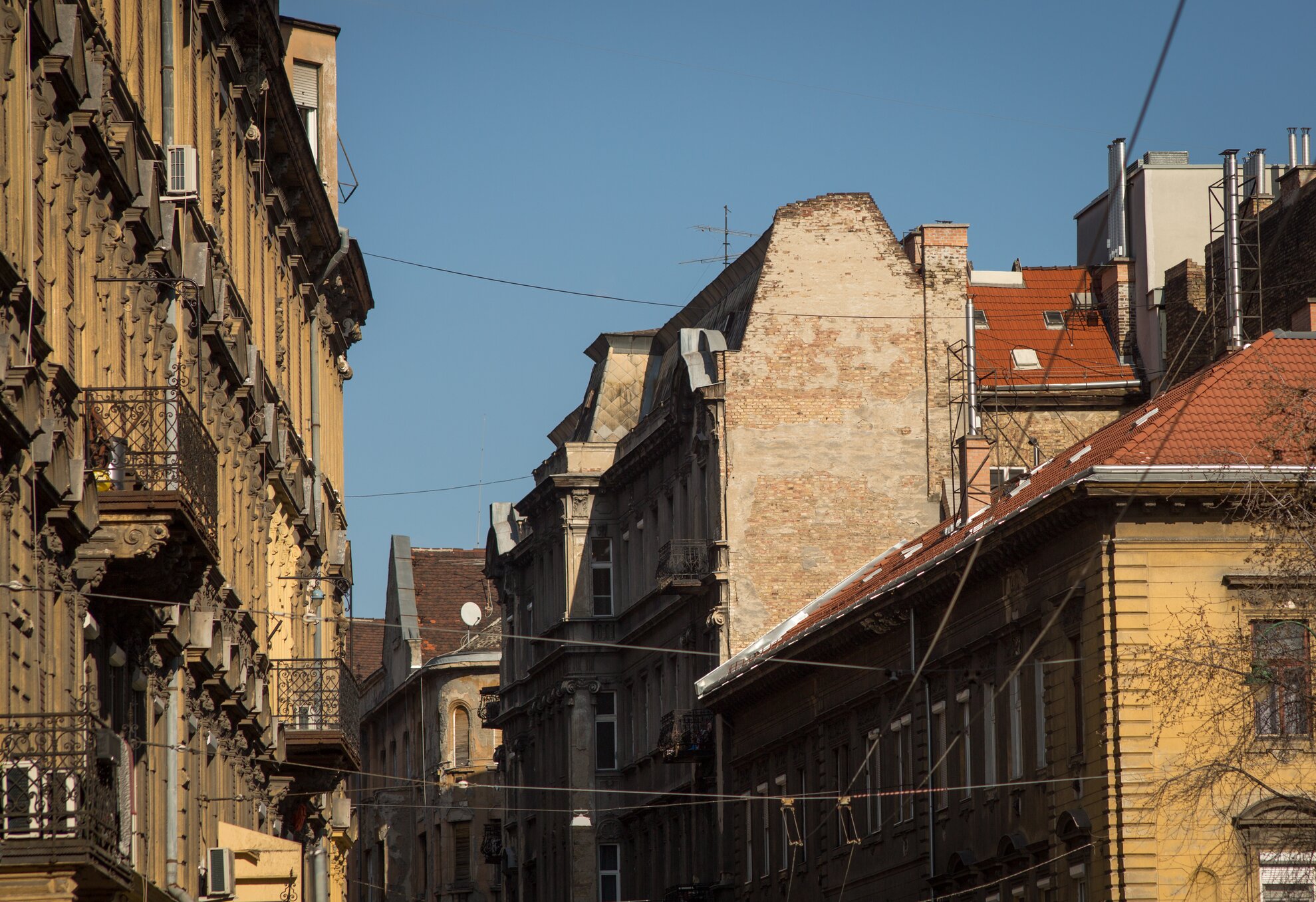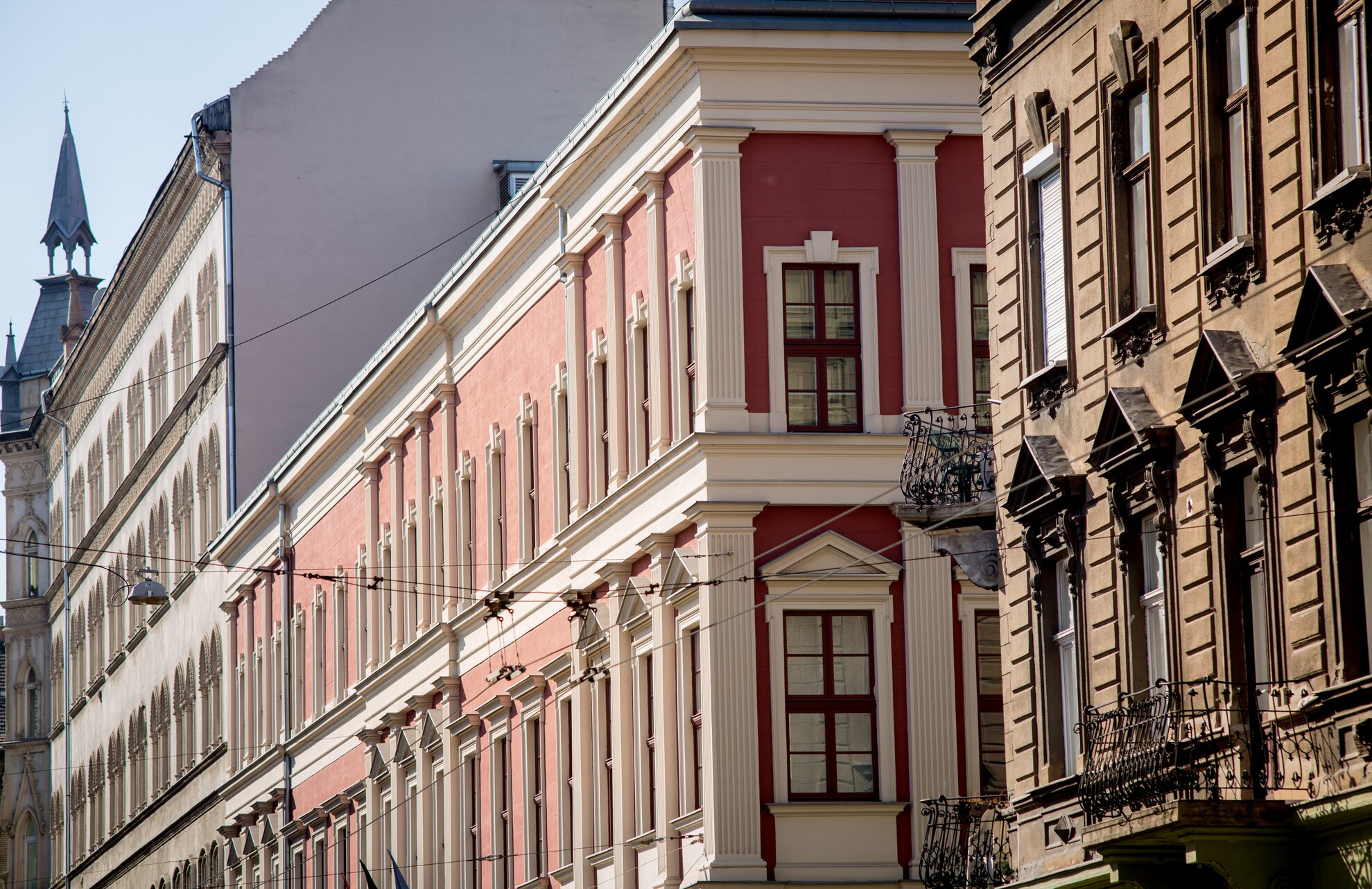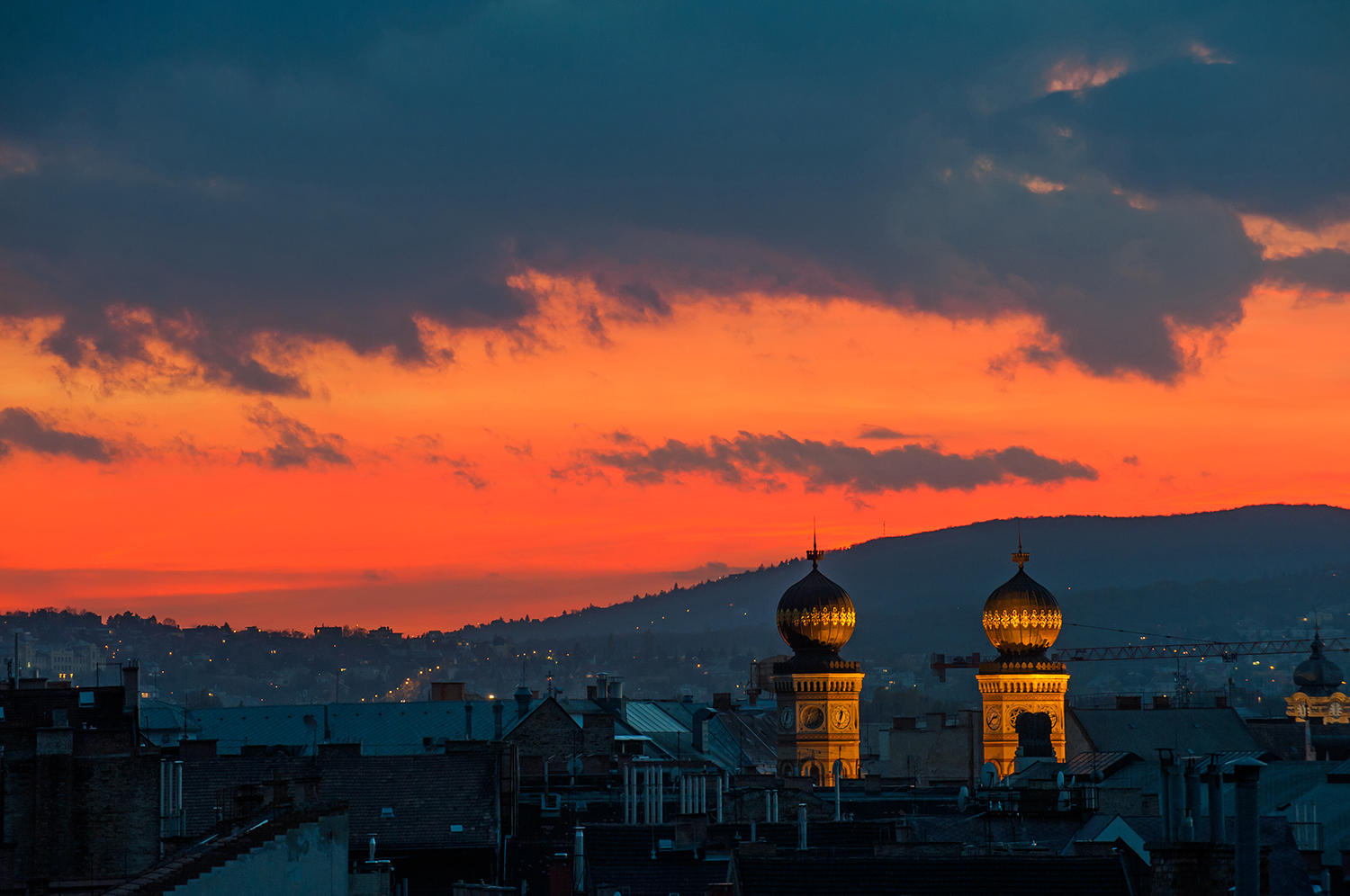There are many markers announcing when you enter District VII, such as the giant mural depicting Empress Elisabeth ('Sissi'), after whom the district takes its Habsburg name Erzsébetváros. Many visitors who came to Budapest before the pandemic will have known the neighbourhood as the infamous Party District, with its eclectic ruin bars and vibrant nightlife, but there's much more here than just places to party. Before the destruction of World War II and the Holocaust, this area was home to the largest Jewish population in Budapest and it is still also known as the Jewish Quarter.
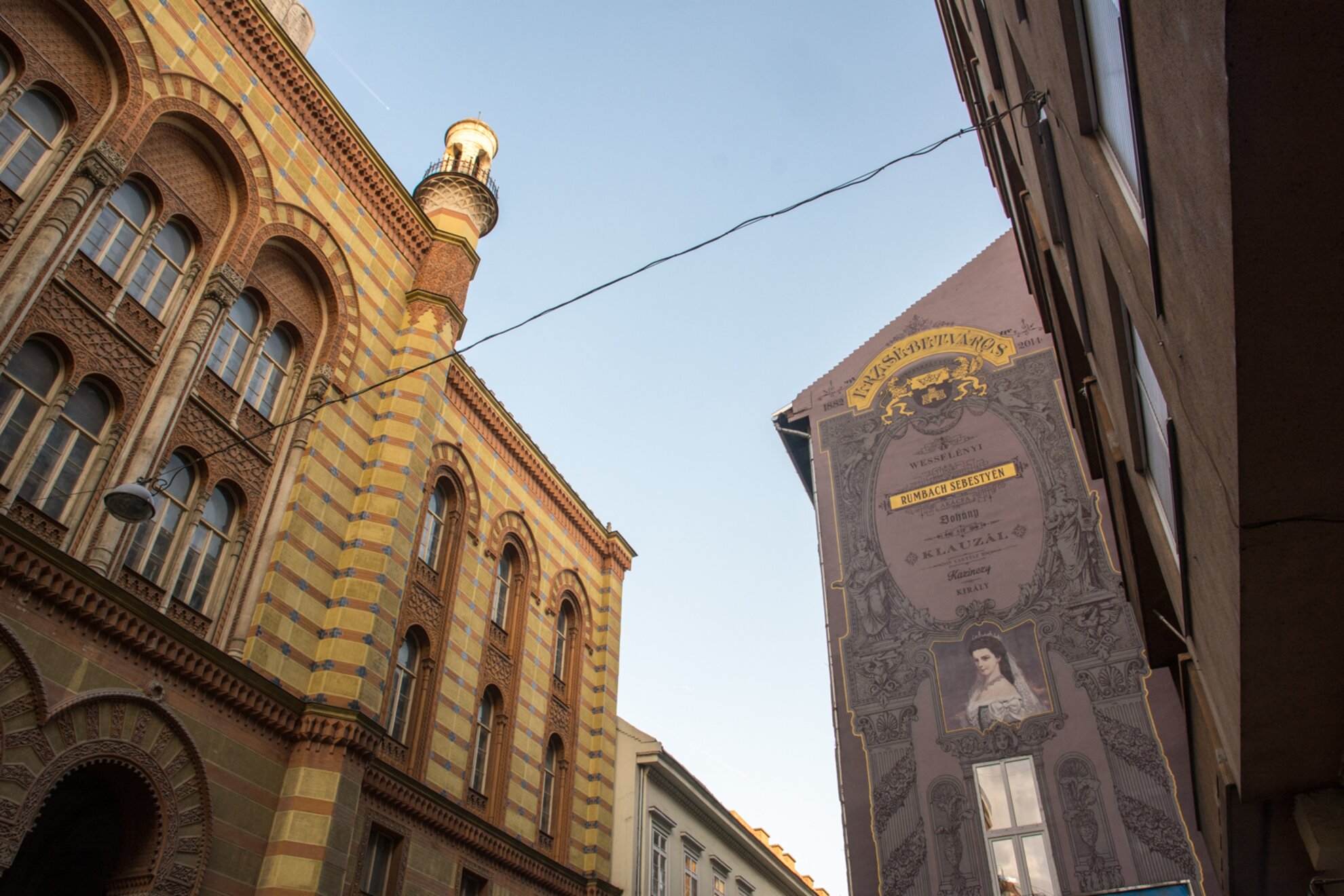
Several magnificent synagogues still exist here, such as the Art Nouveau treasure on Kazinczy utca, the synagogue currently under reconstruction on Rumbach Sebestyén utca, with its intricately-carved pillars, and the huge Great Synagogue on Dohány utca. This is the largest in Europe, measuring 75 metres in length. Many come to visit the Tree of Life Memorial in the synagogue's grounds. Each leaf on the metal tree is inscribed with the family names of some of the hundreds of thousands of victims.
During the war, 70,000 Budapest Jews were corralled into an area of 0.3 sq km, forcing co-habitation in 4,513 apartments with an average of 14 people in each room. The Ghetto Memorial Wall at Dohány utca 34 stands as a reminder to these times.
Other monuments in the area also reflect the past horrors. Carl Lutz was the Swiss Vice Consul in Budapest who worked relentlessly to save more than 62,000 Hungarian Jews. The monument to him on Dob utca stands at the edge of the old ghetto.
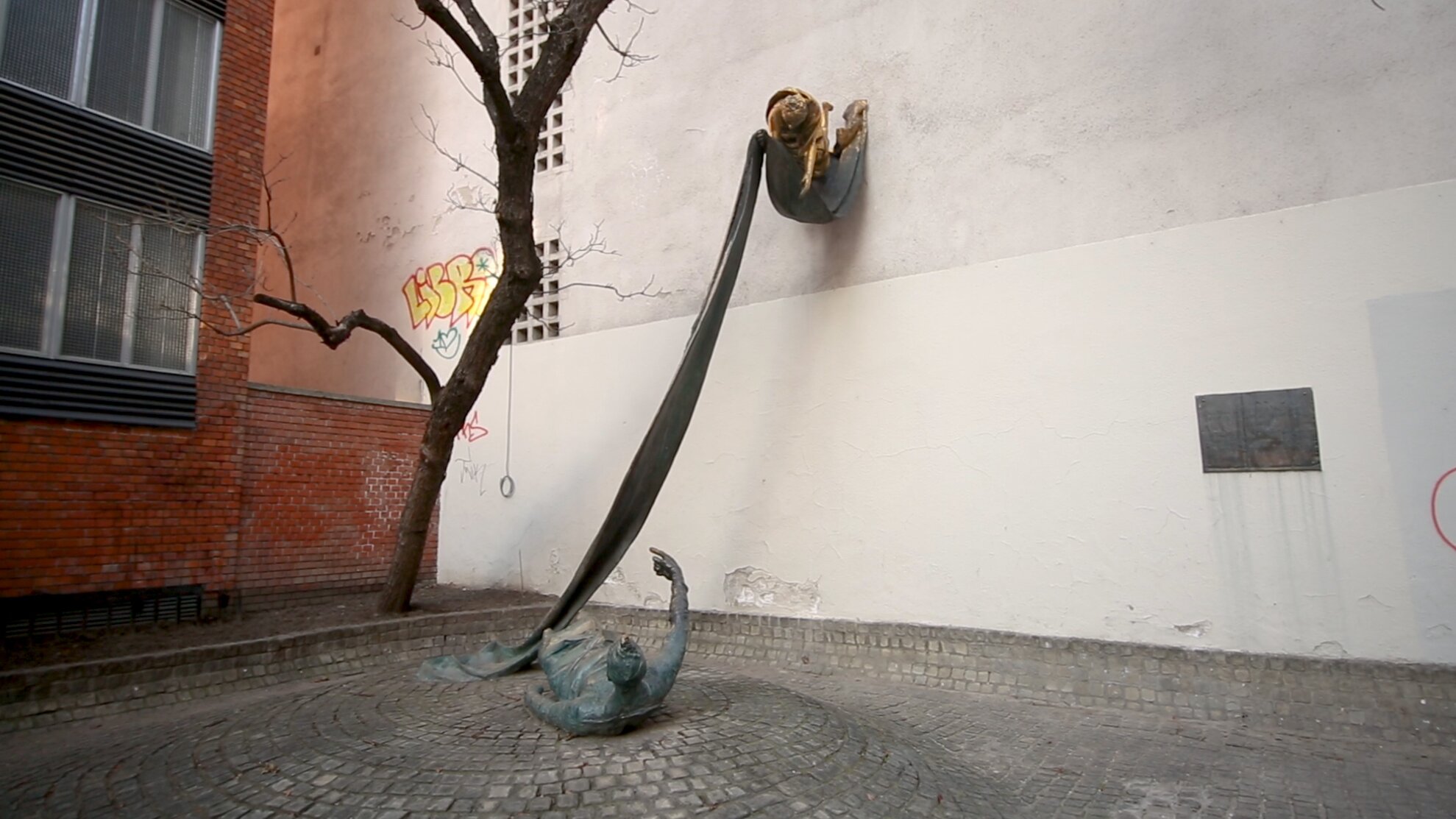
A long passageway between apartments, once a part of the Jewish Ghetto, Gozsdu udvar is now a hub of cafés, bars, pubs, galleries and shops. At weekends, artists usually sell their wares here in a pop-up market.
One of the hallmarks of District VII is the hundreds of tiny shops tucked in next to each other, full of character, such as Massolit, the popular secondhand English-language bookstore and café. From classic novels to books on politics, art, religion and the sciences, Massolit is a primary source for foreigners living in the city to get their hands on fresh reading material, while tourists come here to browse the selection.
Nearby stands the legendary restaurant Kispipa, the old haunt of Hungarian composer Rezső Seress. It was here that he played the piano for over a decade in poverty, as he refused to go to America to collect the royalties for his immensely popular song, Gloomy Sunday. A small statue by Mihály Kolodko commemorates Rezső on the side of the building.
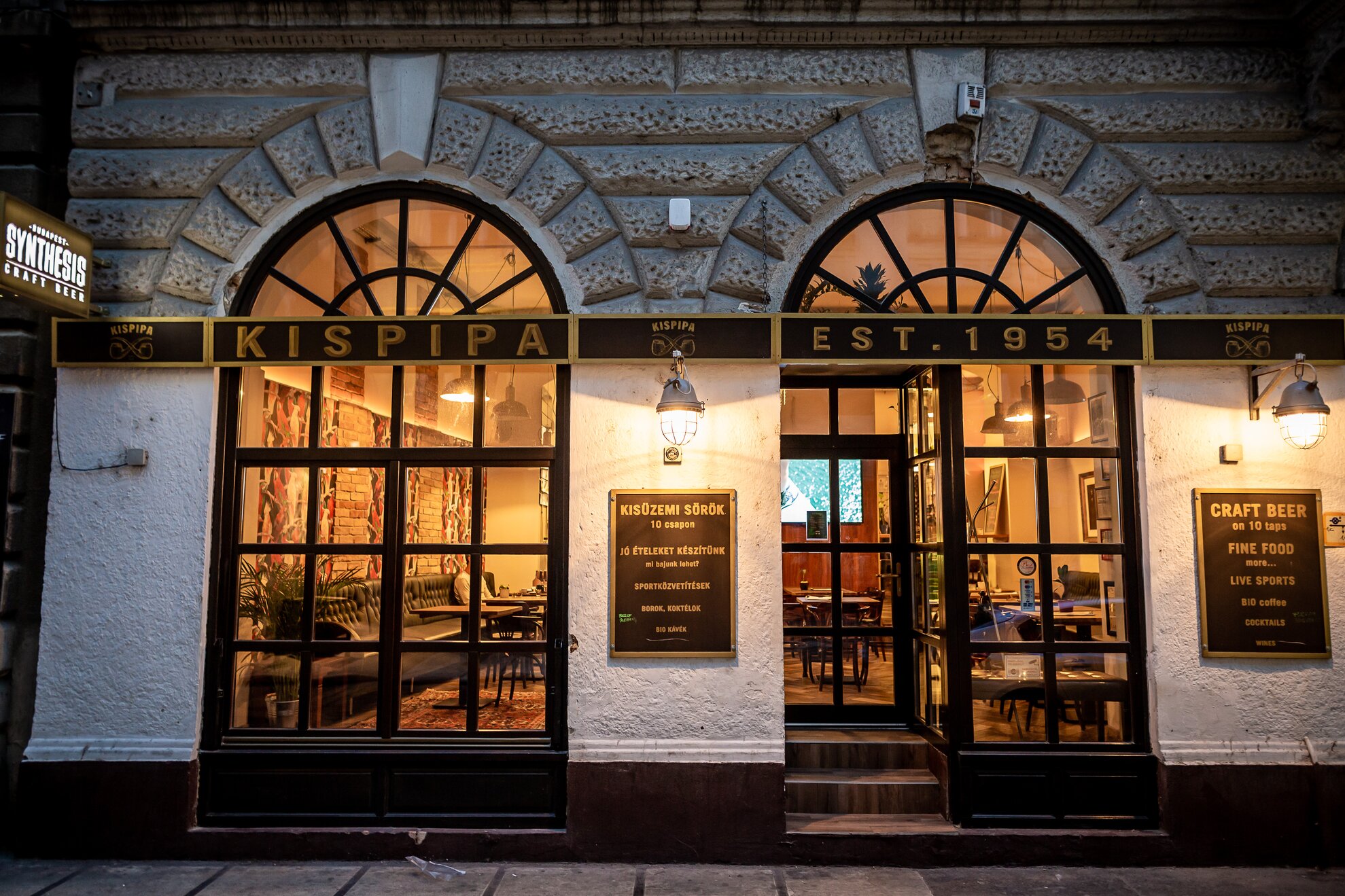
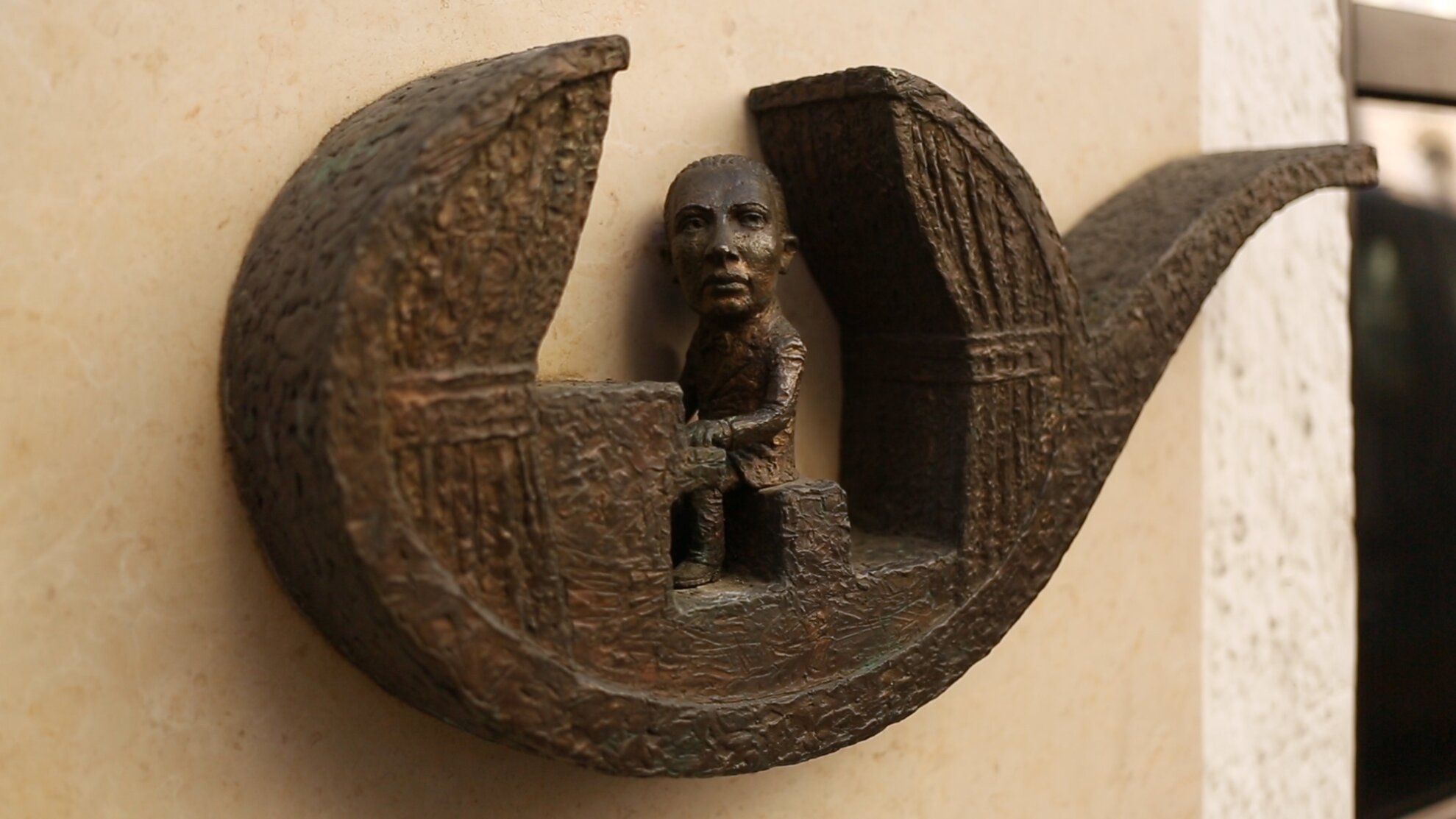
Kolodko’s pint-sized statues are a delight to find in
the city, often hiding in plain sight, like the diver figure sitting outside the extraordinary New York Café. Fourteen brass fauns adorn the exterior of the coffeehouse, the building now a luxury
hotel.
The café was a long-time centre for Hungarian literature and poetry, and
stayed open late, with figures such as author Zsigmond Móricz and playwright
Ferenc Molnár coming here to write, drink and smoke. In fact, the Kolodko
statue is based on Ferenc. The story goes that the playwright was having so
much fun inside the café that he never wanted it to close, so he threw the key
into the Danube to continue his all-night revelries.
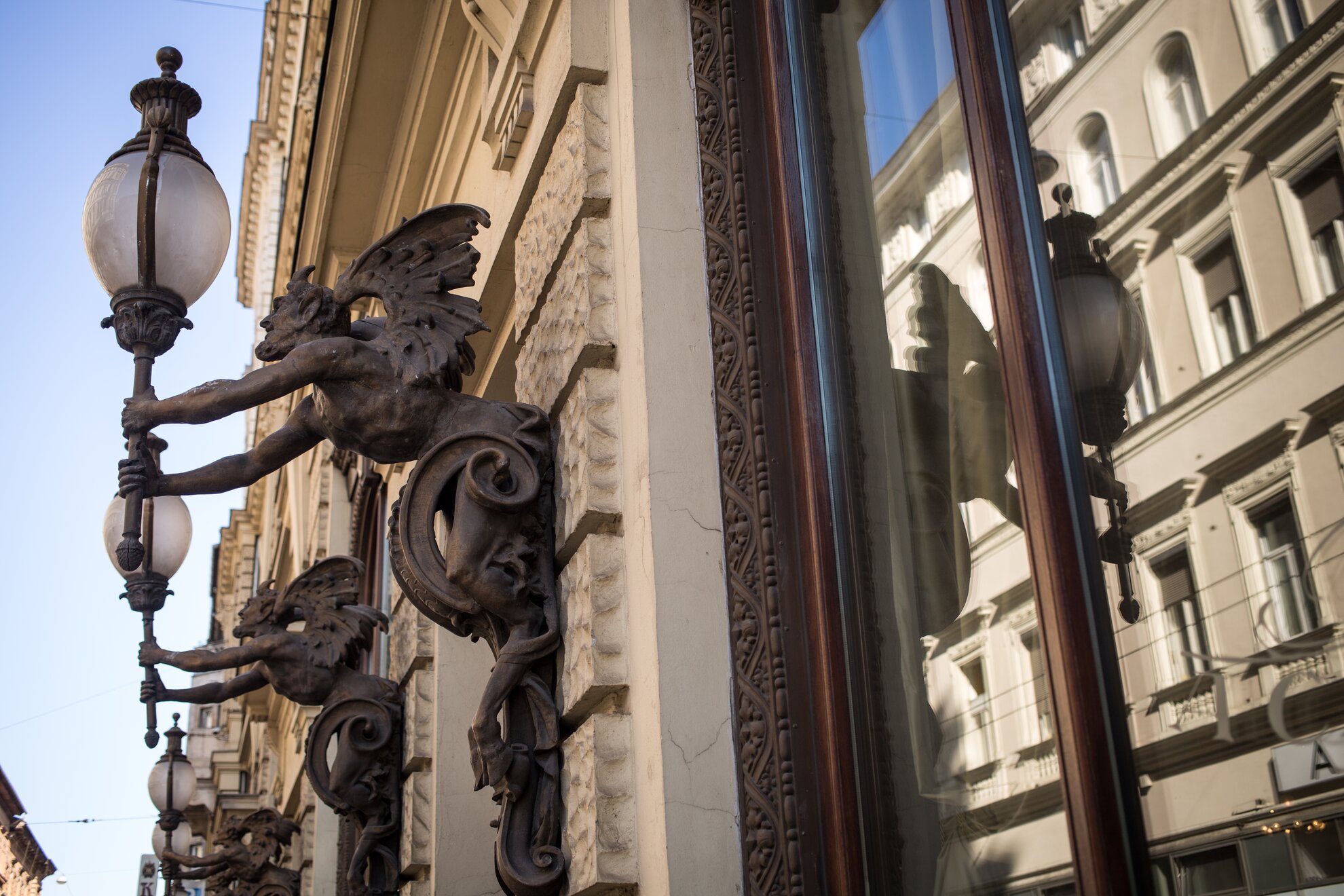
In modern times, the to-be nightlife venues are still in District VII, but located in the famous ruin bars, such as Szimpla and Füge Udvar. These began popping up in areas of the city neglected after the war, slowly evolving into the avant-garde venues we see today, with eye-popping colours, lights, mismatched furniture and ceilings – or the lack thereof – open to the heavens.
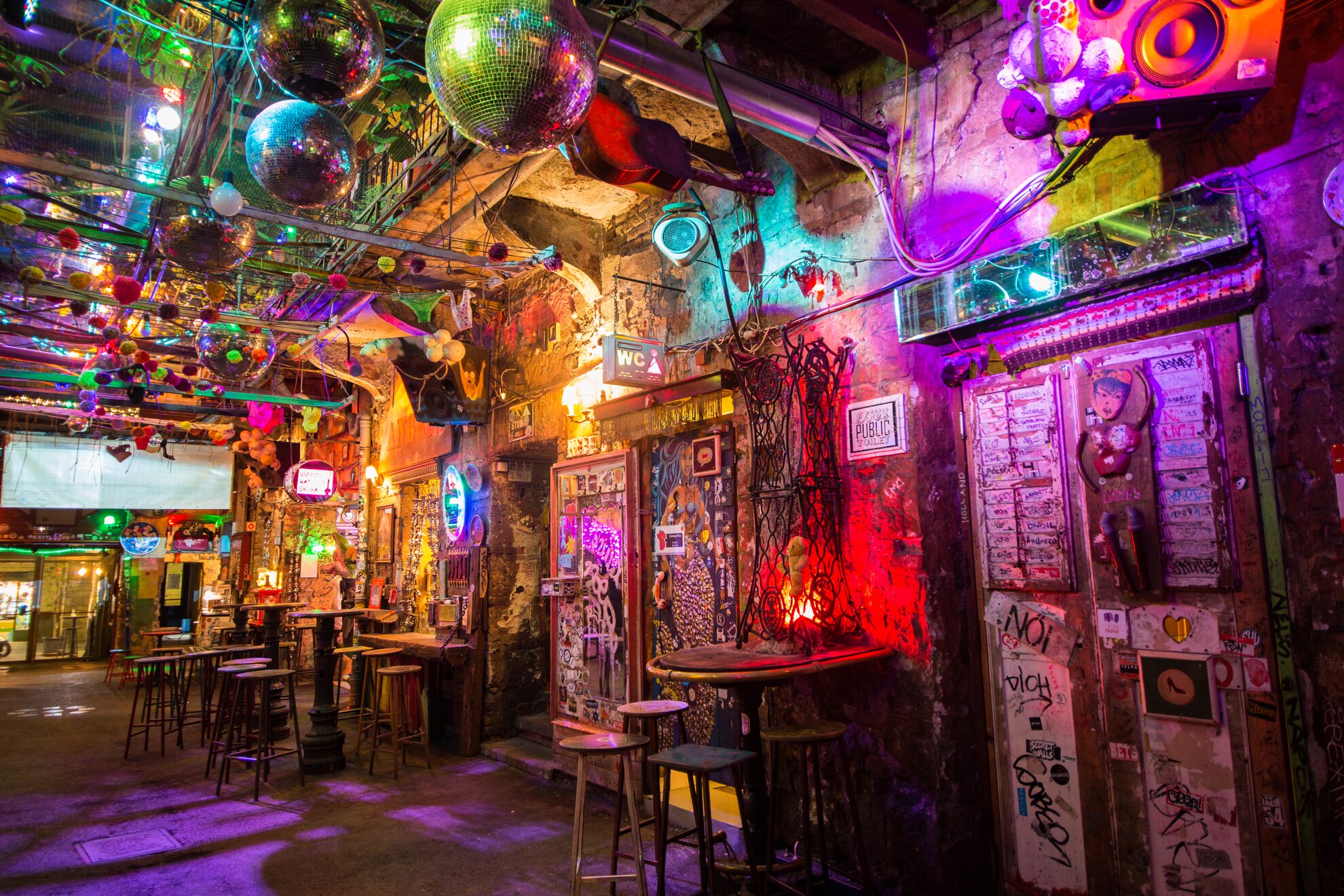
Some of Budapest’s most recognisable murals can be also found in this district, such as the 6:3 painting which commemorates the victory of Hungary's football team over England in 1953.
Just across the street is a giant Rubik’s Cube, an invention created by Hungarian sculptor and professor of architecture, Ernő Rubik.
Near Keleti station is a huge mural celebrating Miksa Róth, the top Hungarian mosaicist and stained-glass artist from the late 19th and early 20th centuries.
On Klauzál tér is a photo-realistic mural known as the Greengrocer. It depicts a real grocer – Zsuzsa néni – whose shop faces the mural itself, and darling neighbourhood scenes like a couple enjoying sunshine on their balcony. This was part of a massive wall-painting project in District VII, also responsible for the Alice in Wonderland-like painting by Dan Ferrer on Kertész utca.
A rather unique landmark in District VII is the Museum of Electrotechnics, which has an open-air courtyard showcasing some of the original neon advertising lights which once illuminated Budapest’s streets. Once a year, for Night of the Museums in June, visitors can see them fired up once again.
In this tiny little district of Budapest, you find everything from historical monuments to large-scale works of art, and some of the city's most memorable nightspots. It's easy to see why District VII is one of the first places which visitors go to see, and one of the last they ever want to leave.
